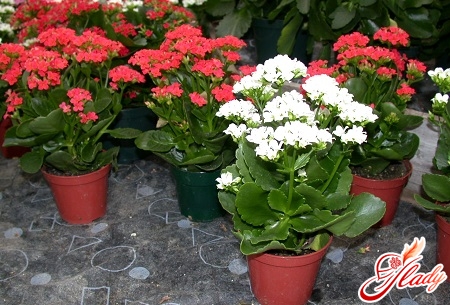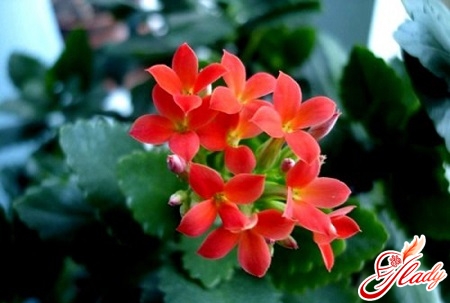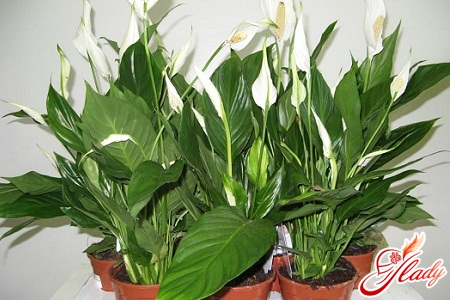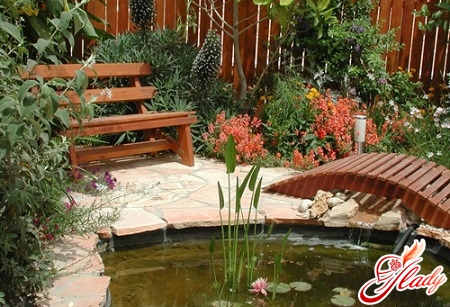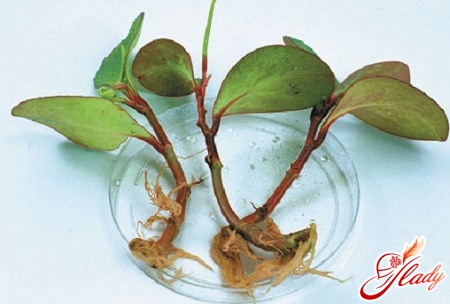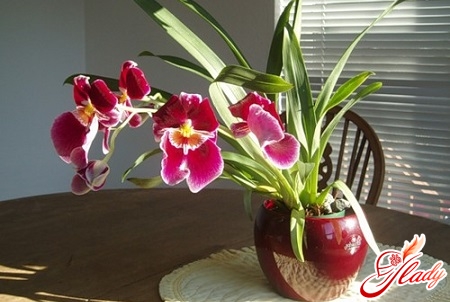 Surely in the collection of the famous detective, huh?also a lover and connoisseur of orchids Nero Wolfe (the hero of detective stories by Rex Stout) was also an amazing orchid Miltonia. After all, any gardener would want to have such an unusual orchid in his collection, not to mention collectors. However, such a beauty will decorate not only a real collection, but also a more modest collection of home flowers. By the way, this orchid got its name in honor of the collector Elligen Milton. What is so good about Miltonia? What is so special about it? How to grow it at home? What care should be provided for it? Let's try to figure it out.
Surely in the collection of the famous detective, huh?also a lover and connoisseur of orchids Nero Wolfe (the hero of detective stories by Rex Stout) was also an amazing orchid Miltonia. After all, any gardener would want to have such an unusual orchid in his collection, not to mention collectors. However, such a beauty will decorate not only a real collection, but also a more modest collection of home flowers. By the way, this orchid got its name in honor of the collector Elligen Milton. What is so good about Miltonia? What is so special about it? How to grow it at home? What care should be provided for it? Let's try to figure it out.
Miltonia as a kind of orchids
This orchid, like all the others, belongs tothe orchid family. In general, Miltonia is the name of a whole genus of orchids, including more than twenty species. All of them bloom very beautifully, which is why they have earned the love of flower growers. Of course, you can’t call Miltonia exotic. But there is something tender and touching about it. And it looks like the well-known pansies. By the way, in everyday life they are called that. Miltonia flowers are remarkable not only for their shape, reminiscent of butterflies, but also for their coloring. Moreover, these flowers are special due to the pattern on the petals in the form of flowing drops. The coloring of the flowers is also striking in its variety - this is a real extravaganza of color: from pure white to rich purple, from a combination of two colors to multi-color, from a smooth flow of color to a harsh contrast. All types of Miltonia are divided into subspecies depending on their origin. The species that came to us from Colombia are called Miltoniopsis, and the Brazilian species are called Miltonia. There are also Miltassia orchids - a hybrid of Miltonia with an orchid of the genus Brassia. Miltonia orchids are epiphytes. That is, in nature they live on trees and belong to sympodial orchids. This means that they grow horizontally, forming so-called pseudobulbs (thickenings that accumulate nutrients and moisture) at the base of the shoots. Leaves and peduncles grow from the bulbs. After the orchids bloom, their life cycle continues with the formation of new shoots (growth).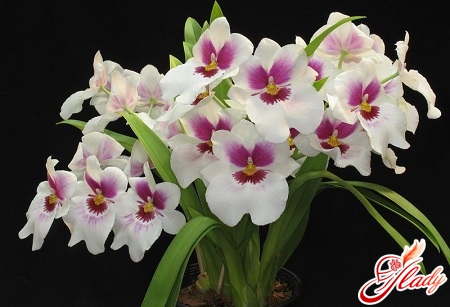
Growing conditions
Although Miltonias are epiphytes, in home conditionsThey are grown in flower pots. Plastic containers are best for these plants, as they prevent moisture from evaporating quickly. A drainage layer of large pieces of bark must be placed on the bottom of the pot, and the pot itself must be filled with special soil or potting mix. Miltonias grow well in soil consisting of spruce bark, sphagnum or perlite. How comfortable Miltonia is in its room can be judged by the color of the leaves. By the way, this is one of the features of this orchid. If the plant feels good in this place, the leaves will acquire a slightly pink tint. In general, Miltonia loves partial shade. This orchid grows and blooms well on a bright window, if it faces East or West. But if Miltonia grows on a southern window, it needs additional shading. Another feature of Miltonia is its love of moderate temperatures. It would seem that a tropical forest flower should be comfortable in hot conditions, but no. A comfortable temperature for it is about twenty degrees Celsius. However, Miltonia does not like the cold either. Therefore, it does not tolerate temperatures below twelve degrees. This orchid is especially sensitive to sudden changes in temperature, and can die from drafts.
Care of Miltonia
Basic care for this orchid comes down tocreating comfortable conditions, proper watering, fertilizing and timely replanting. Miltonia orchids need constant abundant watering during the growth and flowering period. At this time, you need to ensure that the soil in the pot is always moist and do not allow the soil to dry out. However, you should not overdo it, as excessive watering can cause root rot and lead to the death of the plant. Be sure to drain the water from the tray and spray the plant periodically. In winter, orchids enter a dormant period, almost do not grow or bloom. At this time, watering should be reduced to almost a minimum. You need to water the flower occasionally, making sure that the soil in the pot remains almost dry. And with the onset of spring and the appearance of the first new shoots, watering must be resumed. For abundant flowering, orchids need to be fed with special fertilizers. Feeding should begin with the resumption of watering. During the budding period, fertilizing is carried out once a week, and after the beginning of flowering, they do not stop, but simply fertilize the plants less often. Miltonia also needs timely replanting. However, there is no need to move the flower from one pot to another without need. This should be done only when the orchid becomes cramped and its roots simply begin to stick out of the flower pot. For replanting, take a pot slightly larger than the previous one, put a drainage layer on the bottom and prepare the soil mixture. We moisten the soil in the old pot well, knead and tap it, and then carefully remove the plant. Remove the old soil from the roots and place the plant in a new pot. Holding it in the air, we begin to add new substrate, carefully compacting it. In this case, do not press on the soil, but tap the pot. In order for the soil to fill the free space between the roots, it is compacted with a wooden stick, and very long roots, if they do not fit in the pot, are left above the surface of the substrate. The first three to four days after transplantation, the orchid is not watered, but constantly sprayed. It is not recommended to fertilize the plant at this time. And the transplant itself should be carried out only before the start of active growth or after flowering.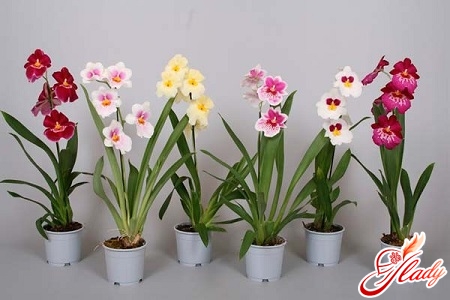
Diseases and pests
Caring for any indoor plant also involves treatment in case of diseases or pest damage. Possible ailments of Miltonia, their causes and necessary help:
- Salinity of the soil leads to the drying out of the tips of the leaves. If you start watering the plant with soft or rain water, the salt balance of the soil will be restored.
- Rooting leads to excessive watering. In this case, it is necessary to transplant the plant into a new disinfected soil and reduce watering.
- Drying of leaves and stems can be a signal ofdamage to the plant by the worm. The wreckers are mechanically destroyed, wiping the leaves and stems with a tampon soaked in alcohol, and then treated with insecticides.
At the first signs of drying out, oppressedthe plant's condition, lethargy and shedding of buds Miltonia needs to be watered and sprayed with phytosporin. It is advisable to transplant the plant into a new pot and replace the soil. Do not forget that the most common cause of indoor plant ailments is improper care. Therefore, try to choose a convenient place for your orchid, protect it from direct sunlight and drafts, do not allow sudden temperature changes and water it on time. But even proper care does not guarantee you abundant flowering. Miltonias are so capricious that no one can say how exactly the newly acquired plant will behave. But, as you know, nothing ventured, nothing gained. Therefore, still take the risk of settling this beauty in your home. Perhaps it will grow and bloom without problems. Good luck! We recommend reading:




